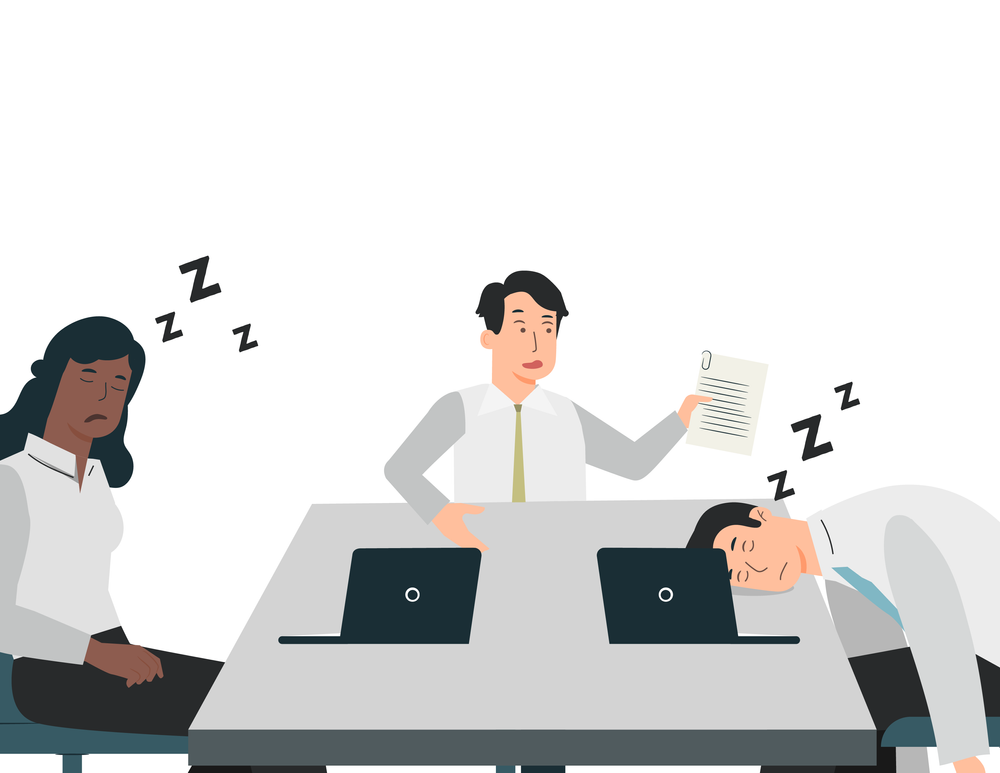How to Facilitate Meetings Effectively

Hosting an engaging meeting is challenging regardless of whether it’s face-to-face or online. However, expecting employees to be fully immersed in the meeting while in the comfort of their own home and surrounded by possible distractions is a big ask (let’s face it, it’s hard enough in a regular workplace setting).
The Threat of Ineffective Meetings
Despite best efforts to improve the optics of the meeting with new terminology, workers are becoming increasingly disillusioned with the concept. Doodle’s 2019 study found that many workers believe meetings take away valuable time from their work without the payoff of being at all useful.
Of course, it’s not just individual workers and the team that suffer from bad meeting management. Doodle’s report estimated that poorly organized meetings could cost businesses $399 billion in the U.S alone. Knowing how to facilitate a meeting effectively is not only vital for your staff, it could mean the difference between a bad quarter and a great one for smaller businesses.
Does this spell the end for the traditional meeting? No, but as the workplace continues to adapt to new challenges, it’s time to reassess the best practices to facilitate a meeting.
The Key to Effective Meeting Facilitation
The key to effective meeting facilitation is you — the meeting facilitator.
In this role, it’s your responsibility to ensure the meeting flows as planned and engages everyone equally. You are effectively a sherpa, guiding your team to a defined outcome, one in which everyone is invested and able to contribute.
Don’t worry if you’re not sure how to tackle the role, just follow these best practices to facilitate a meeting and watch as your team’s engagement and productivity skyrocket.
Assign meeting roles
Effective meetings need structure and participation, and assigning specific roles to individuals is one of the best techniques to facilitate a meeting. Not only does this spread your workload out, it keeps everyone engaged as you guide them through the discussion.
Co-founder and CEO of Lucid Meetings J. Elise Keith laid out some great ideas for meeting roles to help ease the load and improve productivity:
-
Timekeeper - Ensure all time limits for specific topics are adhered to.
-
Vibe Watcher - Responsible for keeping the topic of conversation on track, ensuring everyone has a voice and important topics aren’t being avoided.
-
Decision Maker - The person in charge of setting a plan in stone.
-
Promise Tracker - Ensure that every promise is logged as an actionable item.
-
Voice of Custome - How do these decisions affect the customer? Is what’s being suggested beneficial to clients? This person adds vital input from outside the team.
-
Enforcer - Meetings cannot run effectively if there are no rules in place, this person needs to put their foot down to avoid teams slipping back into bad habits.
Having set roles like this takes a huge load of you as facilitator while also increasing team engagement and morale, a classic win-win situation.
To make this even more effective, try mixing up the roles between meetings to keep things fresh and interesting for your team.
Create and share an agenda in advance
This seems like a given, yet you would be surprised how many people go into a meeting with little or no clue what is expected of them, or what outcome they are working towards.
By offering your team a pre-planned meeting agenda, you sidestep both of these potential problems. It gives a chance for the team to come up with fresh ideas and raise any questions ahead of time, ensuring the actual meeting time is used as efficiently as possible.

In some situations, say in a last-minute meeting where you can’t send an agenda out in advance, take time at the beginning to outline the expectations and running order of your meeting. Without a clear plan before diving into the meeting itself, the team will spend more time trying to understand the meeting’s purpose and not collaborating on achieving the outcomes.
Read our blog, ‘5 Steps of a retrospective meeting agenda’ to hone your skills.
Establish clear outcomes
Again, a very simple idea that often gets ignored. There’s no point in having a meeting without a clear objective in mind. This is a huge factor in the gloomy opinion most employees hold about meetings. When setting the agenda, ensure that you outline exactly what you expect from the process and what is required of your team to make that happen.
Not having a clear objective means that everyone will leave your meeting unsure whether or not it was time well spent. After going through this process a few times, enthusiasm for meetings, and perhaps work in general, will start to decline.
Ask open questions
Just like there is no “I” in “team”, there should be no room for closed questions in a meeting. Why?
They simply don’t work when trying to curate conversation and contribution. Compare the following questions for example:
-
“Do you agree?” vs “What do you think?”
-
“Can you achieve X?” vs “What challenges do you foresee in achieving X?”
-
“Do you need any help?” vs “How can the rest of us help you?”
In these examples, the first question is a closed (yes or no) question. The second is an open question. Which one do you think will encourage idea sharing and collaboration more?
Open questions engage people on a higher level and help maintain a dialogue throughout.
Practice active listening
Despite an increasingly widespread focus on employee engagement, many organizations simply do not listen to their employees enough. The meeting environment can behave like a microcosm of the organization, so practicing active listening here will help employees to feel heard across the rest of the business too.

And the data shows that when employees feel heard, they are more likely to contribute ideas and do their best work — 460% more likely in fact.
Active listening really matters in remote meetings, and making sure everyone feels heard is one of the best facilitation tips for online meetings, if not the best and most important one.
Be impartial
As the facilitator, it’s your job to guide the group through the meeting in order to achieve the best possible outcome. Now, the best possible outcome may not reflect what you would have done, but you’re not there to overrule anyone.
You have to be willing to put aside your role as leader in order for the team to thrive and if that’s not possible, consider appointing someone else who is able to stay impartial throughout the process.
Remember, your role as facilitator is exactly what the title dictates. You are there to get the best out of your team, not beat them into submission.
Check in regularly
We’ve all been in a meeting with a small group of loud, confident speakers that monopolize the conversation and we all know the effect that has on enthusiasm. Not only are potentially great ideas left by the wayside, the morale of more introverted members takes a huge hit.
This is an easy problem to combat, especially if you have assigned someone to be “Vibe Watcher”. If they feel a certain team member has been quiet, simply check in with them. You can quickly improve team morale by letting members air their thoughts.
And who knows, maybe the quiet ones may have just the answer you are looking for…
Establish rules
While setting “rules” may seem a little extreme, it’s vital that you establish the correct etiquette for your meetings. For example; “phones must be switched off before the meeting begins”, “allow others to finish talking before interjecting”. This can even be included on the advance agenda, reinforcing expectations for your team early on.
Without rules in place, meetings can quickly veer off topic. These tangents can cost you precious time and shatter progress towards achieving positive outcomes.
Use breaks and movement to maintain energy levels
This is one of the most important tools to utilize, especially in long meetings. As humans, we can only concentrate for so long before our ability to take in new information or contribute in any meaningful way starts to decline.

Don’t be afraid to let your team go for a quick coffee break if you sense a lull in the group’s mood. It can be much more productive to interrupt proceedings and freshen up the mind rather than committing to crunching it out.
Close the meeting properly
A solid recap can mean the difference between your participants leaving empowered or befuddled. Make sure to spend time going through notes before dismissing the team. This is where your Promise Tracker can come into play, as they can offer a summary of all the actionable tasks identified in the meeting.
Going through the list offers another opportunity for your team to input ideas they may not have formulated during the original discussion, as well as any concerns. It also allows the team to look objectively at the task list ,identify any conflicts that could arise and recognize actions that they and the rest of the team are taking away.
Closing up the meeting correctly will ensure everyone is on the same page going forward, so be sure not to rush things even if your team is anxious to get back to work.
Taking Effective Meeting Facilitation One Step Further
Now you know the key steps for effective meeting facilitation, it’s time to put everything you’ve learned into practice. With EasyRetro, you can take these skills and apply them to your sprint retrospectives with ease!
The EasyRetro meeting tool makes teamwork fun again with its range of unique themes that — alongside these meeting facilitation tips — will fully engage your team resulting in the best outcomes.
See how our fun, simple, and intuitive tool will revolutionize your collaboration process today, with a 7-day free trial.